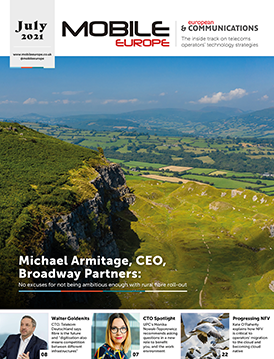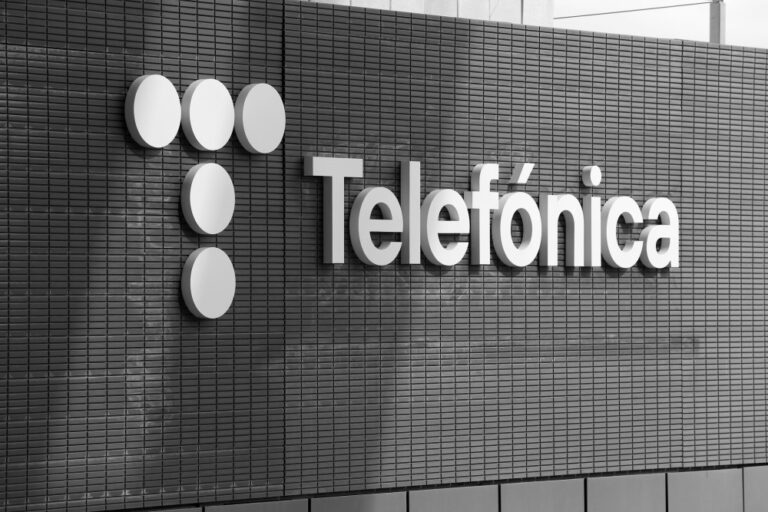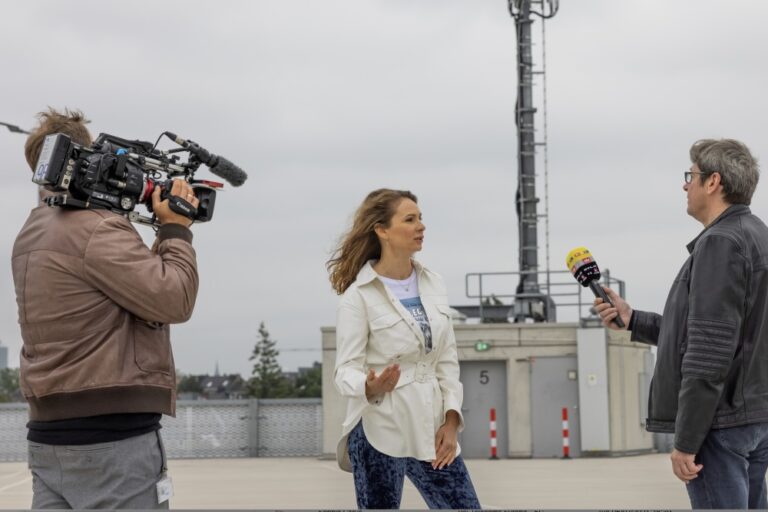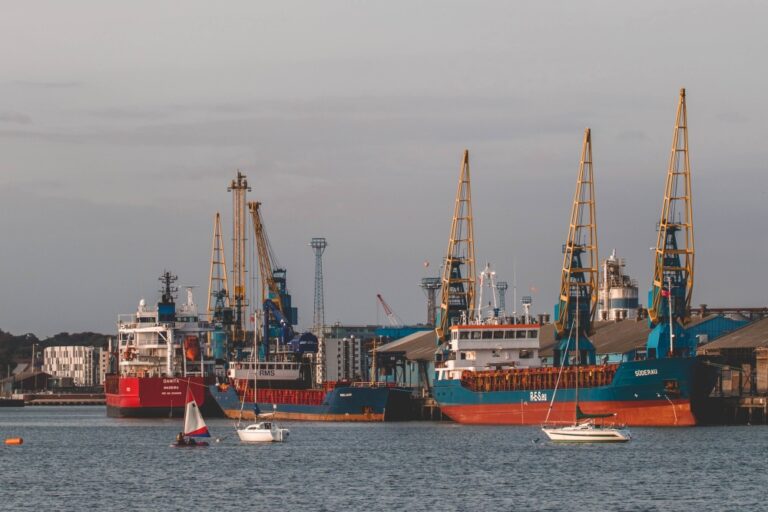Telefonica hoping to raise up to €500m from 49% Tech unit stake
Telefonica Tech hasn’t turned into quite the powerhouse that was anticipated at its launch in late 2019.
The Spanish newspaper, Cinco Dias, has reported that Telefonica group is looking to sell a minority stake of 49% in its Tech business unit. The business is valued at €1 billion and the operator group is looking to complete the transaction by the end of the year.
The business unit was set up in late 2019 as part of Telefonica group’s five-point strategy.
Apparently, Telefonica has hired advisor KPMG and the Morgan Stanley bank. Potential buyers are said to include private equity funds such as Apax Partners.
Unlocking the power?
Telefonica Tech is responsible for IoT, cybersecurity, big data analytics, AI, cloud computing operations and blockchain. Its tag line is, “We unlock the power of integrating technology”.
Telefonica has been selling assets for the last few years as it battles to reduce its debt mountain, which stood at €35.8 billion at the end of Q1.
Since then Telefonica concluded the merger with Virgin Media in the UK, which brought it funds of £ 5.5 billion (€6.426 billion): £ 2.7 billion in a cash payment to Telefónica to offset participation in the joint venture and £2.8 billion to total funds from recapitalisation.
Also it has concluded the sale of its tower estate in Europe and Latin America to American Towers in Q2.
Enea claims first to extend 5G core to manage 4G network data
The “open standard” schema is said to accelerate service speed, manage data at the edge and avoid vendor lock-in.
Enea announced what it says is the industry’s first virtualised data schema that enables mobile operators to map 4G and 5G data models into a single, customisable view from the 5G core to the edge.
Developed for the Enea’s Stratum Network Data Layer, the solution is said to break through vertical data silos, allowing operators to launch and onboard new use cases like edge computing, network slicing and IoT, while interworking with 4G systems and the 5G core.
Pivotal moment
ABI’s Senior Research Director, Dimitris Mavrakis said, “Enea’s Stratum comes at a pivotal moment for operators. Operators want to enter the enterprise market with 5G and use AI and ML to monetize a variety of use cases. Yet 4G/5G centralized data platforms have been a major pain point for operators with proprietary and centralized databases that did not scale.
“A growing number of operators – including AT&T, Telenor, Telefonica, Orange and Vodafone – have implemented significant upgrades to their data platform strategies. More operators will deploy virtualized, distributed systems in line with their cloud-native strategies.”
Enea’s open standard virtual schema is based on 3GPP guidelines that opens the data path to allow operators to manage 5G and 4G data: sunlike the service-based architecture (SBA) in the 5G core, 4G lacks the standards that separate data and functions.
No longer at the mercy?
This means mobile operators “have been at the mercy of their infrastructure vendor, with added data management costs when they needed to make system changes to launch new 5G services with legacy 4G data systems,” according to the press statement.
Roland Steiner, Senior Vice President for Telecoms, Enea, commented, “Data is at heart of 5G, and operators need genuine agility to maximize their potential.
“But network providers have struggled to manage 4G and 5G data on their own terms. Our virtualized 5G core data management solution gives ownership of data back to operators so they can take back control of their data and their network.”
Stratum is cloud native, so mobile operators can dynamically onboard new services faster and support data management at the edge, plus data that is created or updated in one location can be accessed and read anywhere – securely and instantly, according to Enea.
Colt joins IBM partner ecosystem to collaborate on 5G and edge
The two have demonstrated, in the lab, that deploying IBM Cloud Satellite on Colt’s edge platform can be simplified for customers.
Colt Technology Services will collaborate with IBM to help its customers adopt an edge computing strategy that enables them to move data and applications across hybrid cloud environments, from private data centres to the edge.
Colt plans to work with IBM to jointly explore innovative use cases using IBM Cloud Satellite and Edge Application Manager, to benefit enterprise customers globally across 29,000 enterprise buildings.
Distributed infrastructure
Managing new, distributed infrastructure is not simple for enterprises; in particular when applications have stringent location-dependent requirements like low latency, regional data compliance and resilience.
IBM Cloud Satellite is IBM’s hybrid cloud offering, built on Red Hat OpenShift (Red Hat is owned by IBM), that allows customers to deploy secure and open IBM Cloud services anywhere they choose – on-premises, on any public cloud, or at the edge.
Virtual machines for IBM Cloud Satellite can be instantiated and configured using a management and orchestration tool with zero-touch provisioning.
Furthermore, Colt’s on-demand networking capabilities help provision critical connectivity in near real- time and it wants to combine this with distributed cloud deployments using the IBM Edge Application Manager for its customers. They include enterprises in industries such as retail and healthcare, and are spready across 29,000 enterprise buildings
A recent IBM Institute for Business Value report, Why organisations are betting on edge computing: Insights from the edge, revealed that 91% of the 1,500 executives surveyed indicated that their organisations plan to implement edge computing strategies within five years.
Autonomous management
IBM Edge Application Manager is described as an autonomous management solution that runs on Red Hat OpenShift. It enables secure deployment, continuous operations and remote management of AI, analytics, and IoT enterprise workloads to deliver real-time analysis and insights at scale.
The introduction of Intel Secure Device Onboard (SDO) made available as open source through the Linux Foundation, provides zero-touch provisioning of edge nodes, and enables multi-tenant support for enterprises to manage up to 40,000 edge devices simultaneously per edge hub.
IBM Edge Application Manager is claimed to be the industry’s first solution powered by the open-source project, Linux Foundation Open Horizon.
Evaristus Mainsah, GM, IBM Hybrid Cloud and Edge Ecosystem, said, “Together, we can help enterprises accelerate their digital transformation by acting on insights closer to where their data is being created, at the edge.”
Advantage at the edge
“Colt and IBM have been working together for many years across multiple markets and verticals with a focus on accelerating digital transformation. As we see an increasing demand for multi- and distributed cloud environments, we will collaborate on how we can serve our joint customers, “said Mark Hollman, VP Partner Development and Success.
“We’re exploring now how to combine our Colt IQ Network with IBM’s hybrid cloud platform, to help deliver innovative solutions designed to help accelerate digital transformation for our enterprise customers.’’
Colt is part of IBM’s partner ecosystem, collaborating with more than 30 equipment manufacturers, networking, IT & software providers to implement open standards-based cloud-native solutions that can autonomously manage edge applications at scale.
Drei Austria launches 5G Standalone trial in capital
Hutchison Drei Austria has announced the launch of a trial 5G Standalone (5G SA) network in the capital Vienna.
The operator intends to launch a commercial 5G SA network in spring 2022 and will use spectrum in the 700MHz and 1500MHz bands that it acquired at auction in September last year.
The CTO of Drei, Matthias Baldermann, said, “Drei was the first pure 3G provider in Austria. We have made mobile internet at home suitable for the mass market and launched our 4G network as the first operator in Austria.
“After the pandemic year 2020, we are once again proving our pioneering role with one of the first 5G standalone test companies in Europe. Based on a joint new core network, we will start commercial operation of 5G standalone in a few months.
“With the largest 5G network in Austria, we will bring households and companies in every corner of the country the full potential of 5G in addition to very fast internet.”
German TV broadcasts live interviews on Vodafone Deutschland’s 5G
Look (almost no cables), no outside broadcast trucks, no wire tether for camera operator, new perspectives for viewers.
5G’s promise to revolutionise broadcasting came a step closer this week. In Germany live, real-time TV reports were broadcast from remote locations using Vodafone Germany’s 5G standalone infrastructure as the transmission network.
The operators collaborated with German TV giant RTL, which equipped TV cameras with 5G SIMS technology that sent live TV signals back to the RTL’s production centre for immediate broadcasting.
Standalone in real time
“5G standalone transmits data in real time – for example, live images for television. Reporters become even more flexible with 5G because cameras are no longer wired,” noted Vodafone Germany CEO Hannes Ametsreiter.
He added, “Live images can be transmitted spontaneously and at any location directly from the camera to the broadcasting centre via our real-time network”.
Equipped with 5G technology, in future reporters will be able to report on major events and current events even more spontaneously and more flexibly and transmit live images directly from the location.
Virtual production
Also, camera signals can be processed in a virtual control room so that production can be carried out from many different locations. This is particularly advantageous when images of unpredictable events are to be transmitted in places where there is no fixed space for an OB van, and insufficient power supply.
As it will be possible to broadcast from far more venues than previously, as there are not the space and power restrictions, traditional terrestrial broadcasters will get a boost in their fight against the streaming services by broadcasting sporting, music and other events live.
The infographic shows how a live sports broadcast makes it to your TV via 5G.

BT and Associated British Ports trial IoT and sensor tech
BT deploys its Intelligent Asset platform across the Port of Ipswich to speed movement and processing of cargo.
BT and Associated British Ports (ABP) are trialling the IoT and sensor technology to speed up the movement and processing of cargo goods, and digitise the Port of Ipswich’s logistics and operations processes.
ABP and BT have installed IoT devices on cranes and transport equipment, which are used for the collection and transportation of cargoes across the port.
Data analysis
The data generated by the devices are captured, analysed and visualised on BT’s Intelligent Asset platform to make the unloading and transportation of cargoes more efficient – in near real time.
The solution interprets the data from a range of port equipment, providing a record of time, travel distance, routes taken, and weight of goods unloaded.
The information is automatically sent to port management, allowing them to track the progress of the ship-to-shore operations.
The idea is that this enables the Port of Ipswich’s operational team make rapid, data-driven management decisions, and facilitate more collaborative decision-making with customers, and to make the best use of resources and assets to meet customer demand.
Reducing pollution and inactivity
BT’s IoT solution also monitors periods of inactivity, underutilisation, and maintenance requirements to gain a better understanding of the resourcing of crane drivers, for instance, to reduce costs and greenhouse gasses.
The solution gathers insights like how often the equipment is being used, and how much distance it covers to provide an accurate view of maintenance requirements for plant equipment and machinery.
Dean Terry, Managing Director, Corporate and Public Sector, BT’s Enterprise unit said, “It’s fantastic to see the early success of our partnership with ABP as we support their ambitions for the Port of Ipswich to become a leading smart port.
In deploying our IoT solution, we’re able to help produce intelligent, actionable insights to support the teams on the ground to monitor equipment in real-time, and make instant, autonomous decisions to speed up the supply chain. This is made possible by combining our award-winning 4G EE network with our deep expertise in sensor technology, network infrastructure and supply chains.
Andrew Harston, Region Director, Wales and Short Sea Ports, Associated British Ports, said, “The data generated by the Internet of Things solution gives the team in Ipswich the power to manage our resources and assets more effectively, improving our productivity and reducing our costs. Ultimately this trial will help us to provide even better customer service.”
DT reportedly begins sale of T-Mobile Netherlands
Bloomberg says Deutsche Telekom (DT) has begun the sale of its Netherlands subsidiary, which could bring €4.5 billion.
The operator group is apparently working with Morgan Stanley and has sent out information to potential bidders, according to Bloomberg’s confidential sources.
One source claimed DT has asked for first-round offers to be submitted this month.
Investment and debt
DT is preparing to invest billions in fibre infrastructure in Germany (where it is seeking investment from a third party or parties) and needs a hefty sum to take advantage of its option to increase its holding in T-Mobile US – to more than 50% from 43%.
The DT group is already in debt to the tune of €130 billion.
The sale is attracting preliminary interest from potential bidders including Apax Partners, Apollo Global Management Inc., BC Partners, Providence Equity Partners and Warburg Pincus, the sources said.
None of them has been prepared to comment so far.
Going Dutch
DT went into the Dutch mobile market in 2000, acquiring a stake in a venture with Belgacom and Tele Danmark. The business was renamed T-Mobile Netherlands in 2003 after the German carrier bought out its partners
It considered selling the business at a similar valuation to now 2015 to fund wireless frequencies in the US, but decided against it.
In 2019, T-Mobile Netherlands merged with Tele2 AB’s Dutch business to create one of the biggest carriers in the country.
In May, Tele2’s CEO, Kjell Johnsen, confirmed the company planned to sell its 25% holding in T-Mobile Netherlands and focus on its core markets in the Nordics and Baltics.
Such assets are attractive to private equity firms as they gain control of the underlying infrastructure, which offers steady long-term returns.
In May, the Dutch telecom group Royal KPN NV said it had rejected an “unsolicited high-level approach” from investment firms EQT AB and Stonepeak Infrastructure Partners.
Grupo Telefónica’s JV starts wholesale fibre operations in Brazil
FiBrasil is a joint venture between Grupo Telefónica and CDPQ: Brazil is one of the operator group’s four main markets.
FiBrasil Infraestructura e Fibra Ótica (FiBrasil) is a neutral fibre network in Brazil and is present in 34 cities (covering 1.6 million households) at the launch of operations. By the end of 2021, it expects to cover 500,000 more.
Joint venture
It is a joint venture between Telefônica Brasil and Telefónica Infra – Telefónica Group’s infrastructure arm – and global investment group CDPQ.
Brazil is one of Telefónica Group’s four main markets outline in its five-point plan at the end of 2019, along with the UK, Germany and Spain.
Telefónica Group and CDPQ each own a 50% stake of FiBrasil, in a co-controlling governance model. The shareholding of Telefónica Group is equally divided between Telefônica Brasil (Vivo) and Telefónica Infra.
The new company will have an independent team, led by a CEO and an executive body, with more than 150 employees.
Wholesale model
From its starting point of covering 1.6 million households, FiBrasil is expected to bring fibre infrastructure to 5.5 million homes and businesses over the next four years.
It will provide access to a high-speed fibre neutral network in a wholesale model for companies that want to expand their coverage throughout Brazil.
Vivo – Telefónica’s Brazilian brand – will be FiBrasil’s first wholesale customer, with a 10-year contract. With FiBrasil, Vivo intends to reach 24 million Brazilian households by the end of 2024.
As part of its business model, FiBrasil allows its clients to reach their customers with lower capital requirements and shorter time-to-market, enabling them to replace the risk of a high initial investment for a less capital intensive model, speeding up fibre coverage in a country of continental dimensions.
Airtel’s network automation is as inevitable as water obeying gravity
Airtel’s CTO Randeep Sekhon and Bradley Mead of Ericsson talked to Annie Turner about the urgency of their joint approach to automation.
Although Airtel has fixed infrastructure, our interview focused on its mobile network, which is of immense scale and complexity, and has been managed by Ericsson for some 16 years. The mobile network has 220,000 towers across India and almost 340 million subscribers.
This article first appeared on FutureNet World and is reproduced with kind permission.
The operator shut its 3G network two years ago, and now runs 2G and 4G technologies on all sites. Unlike many other countries, spectrum in India is allocated in small tranches of frequencies that are not contiguous. This means towers typically have 12 radios for the different frequencies instead of the more usual three. To simplify things, each site now is single vendor – Ericsson, Nokia, Huawei or ZTE.
In the UK, the revenue per user ranges between £18 (€21) and £40, Airtel’s CTO, Randeep Sekhon, states, whereas its average revenue per user is the equivalent of £1.50, For that, Airtel’s customers get unlimited voice and texts, and 1.5GB of data daily – so in a 28-day period, a customer could consume up to 42GB, making cost to service a serious issue.
Giving it away
Since Reliance Jio launched with a 4G-only service 2016, which is gave away free for two years, India’s mobile 13 operators are reduced to four. Jio is the largest, Airtel the second biggest. VI is from the merger of Vodafone and Idea whose market share has fallen to 22% combined. The government-run BSNL has no 4G.
Furthermore, 98% of the Indian market is prepaid and many subscribers have more than one SIM. Sekhon estimates that 40% of prepaid customers switch operators at the end of every 28-day period annually which is more like rotational churn. He says, “It’s not enough to have a presence in the market, you have to be on top or your game or you suffer churn” – of epic proportions as about 650,000 Indians are connected to 4G networks.
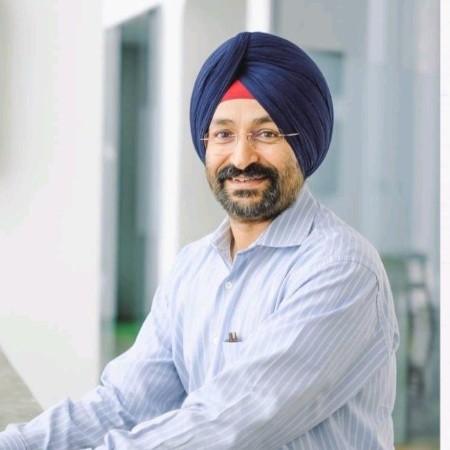
Randeep Singh Sekhon, Chief Technology Officer, Airtel
Another issue is the country has many remote areas, so field staff often have little or no training, and switch jobs frequently. Sekhon states, “If we can replace untrained manpower with trained machines, then we will. They will make better margin, we will get better results: automation is the way to go. It is inevitable – like water flows with gravity.”
Airtel told Ericsson it needed a different engagement and wanted “to put force into automation” when it came to contract renewal because it had close to 10,000 people involved in running the network, directly and indirectly. As it opens 20,000 to 25,000 more base sites every year, 10% or more staff were added. The escalating cost was unsustainable.
Bradley Mead, Head of Network Managed Services, Ericsson comments, “Randeep hits at the heart of why we had to create something different that we call the Ericsson Operations Engine… We started with a clean sheet of paper in late 2017…We asked ourselves and key customers if they could start up from scratch, what would processes look like? What capabilities do we need to invest in? What should future capabilities and people’s skill sets be?”
Sekhon notes, “There is serious investment in acquiring platforms…instead of extracting data through files, manually crunching data, then doing script files…you need to API-ify your network, put in a data lake and run your intelligence layers on top… you cannot run networks with traditional OSS tools and key performance indicators (KPIs).” Instead of using KPIs, Airtel uses customers’ complaints as its performance metric, monitoring their trends. He explains that complaints cannot be gamed, unlike other measurements.
We are paranoid,” he adds wryly. “You need to elevate yourself to a different level of customer experience – every mobile phone is a sensor, it sends you rich information, you pull it together, which creates petabytes of data, then start correlating it. This is where the [automation] journey started – we brought all this into a data lake and exposed all the tools we have to Ericsson: that means all of what my engineers use, they can use and all of what they do, they expose to us.
“If we need this correlated data for my internal use case, the brutal transparency we have in terms of trust [ensures that] we are both meaning the same thing.”
Mead credits this “brutal transparency” with enabling them to improve performance on many levels one example being reducing mean time to repair by 24%.
Operations
Sekhon says there are four domains in which Airtel wants to apply automation. The most important is operations. Machine learning has helped apply data correlation to alarms. The ultimate aim is automatic resolution of the issue without human involvement using closed loop.More use cases are identified and developed all the time so more events can be handled this way.
Sekhon muses, “We’re not there in artificial intelligence yet, but we have lots of machine learning use cases. Cognitive [AI] is a little far away [for us] even so, machine learning is giving us correlations, which we would not otherwise see.”
Mead adds, “We’ve doubled the amount of automation in the past two years so now 69% of all alarms are automatically correlated and resolved without human intervention. Another 13 or 14% are semi-automated, and the rest still require a human managing the process.”
The next target is to become more proactive, rather than reactive, and focus on performance moving from being green to amber, where customers might experience some mild impacted, and from there to red when they really see and feel significant performance impact.
The next step is predictive actions where we can actually prevent incidents. “Predictive is where we really want to be paired with closed loop automation– then you’re really hands off,” Sekhon says.
Mead says, “That’s where we’re really focusing our efforts and investments right now. And we’re starting to see real examples…We can predict when a cell is likely to ‘go to sleep”. This doesn’t trigger an alarm. Also if the network is about to suffer reduced data throughput, says, then dynamically rebalancing some traffic for a short period of time, all done automatically in a closed.
Mead adds, “These are the things we’re working on…Event-based processes will always need to be there but what will proactive and your predictive processes look like? They are fundamentally different to the world we grew up in which is a very exciting journey.”
Network quality and planning
Optimisations fixed by closed loop are in the minority, but this is growing and even with partial automation, the field worker despatched to fix the problem has information about the problem.
Network planning is super important. Sekhon explains, “We run every site like a shop – it has to make money, so you have to plan and place it right.”
Decisions about where to build new sites are from diverse sets of data, including counting the number of roofs in the area that would be covered, to white goods deliveries to the area, banking information, and data about schools and post offices. They are correlated to check the site will contribute the minimum threshold revenue.
“Investing in capacity should be it should be just in time: people should not suffer congestion but put capacity in early and you’re wasting money.”
Deployment
Airtel is keen to reduce human error in deployments through zero-touch deployments. Workers currently send pictures to the sub-contractors. Sekhon says, “We are slowly moving to machine read the pictures to check the installation”.
He sums up, “Operations, network quality, planning and deployment – the cycle has started and we are moving from reactive to proactive and predictive. India doesn’t have 5G yet but we can use this same intelligence and morph it up for early 5G investments…which will be much higher investment than in the past. We also use all this in our fixed line networks for fibre planning and operations.
“We make big investments in these tools, but they are not they’re not very expensive compared to the investments we make in networks, so we feel the business case holds”. This includes running the network at 8% greater loading since the work began.
As Sekhon says, “You can milk your assets much more through investment in automation with the right skilled people…and this is what Ericsson brings to table.”
Mead observes, “People need to be highly skilled – technically competent in technology domains – but also with skills in data engineering and data science be able to work with automations. Automations and networks don’t stand still: they and the machine-learning algorithms need to be constantly lifecycle managed and tuned.”
Sekhon wants Ericsson to share more of its knowledge and experience gleaned from working with so many operators who are broadly addressing the same issues: “Of course it’s a commercial business but Ericsson can share best practices, play an anchor role here in some way like open communities because if I give, I’ll get something back”.
He is optimistic about the potential of telecoms to do great social good, especially since the pandemic demonstrated how much can be achieved remotely and suggests perhaps children in remote areas could benefit from high quality teaching, for instance.
Mead says of the pandemic, “If we hadn’t begun the automation journey some years ago, we would have had a very different challenge to manage over the past year…the automation efforts have really paid off, but it’s also shown us that we can work more flexibly and still collaborate which again is exciting for the future” – particularly as the era of 5G and network slicing in imminent.


